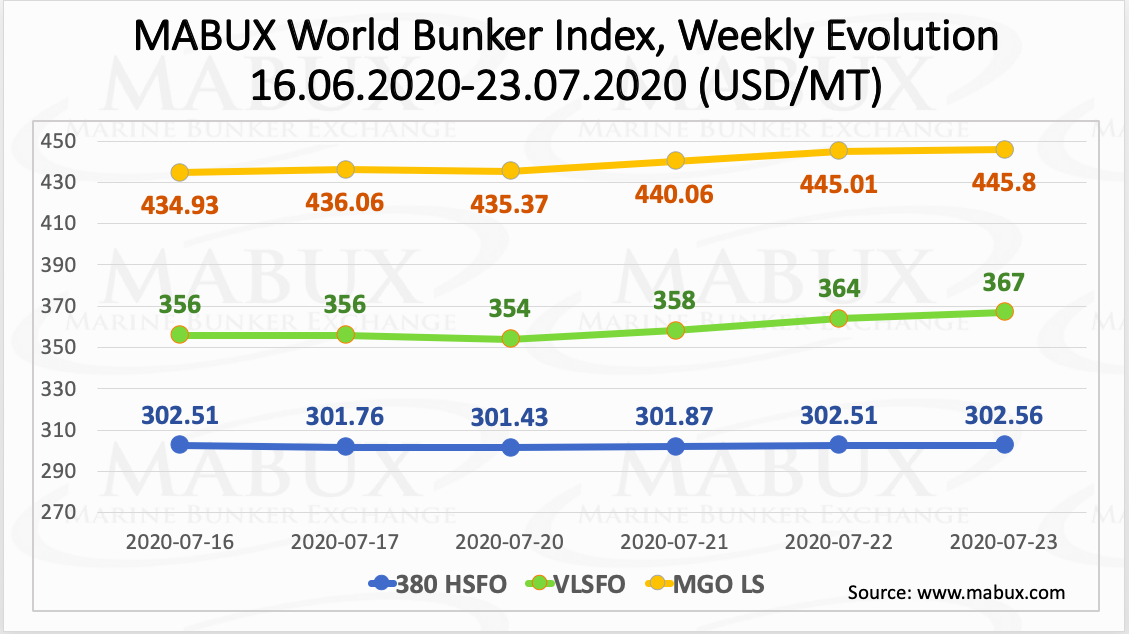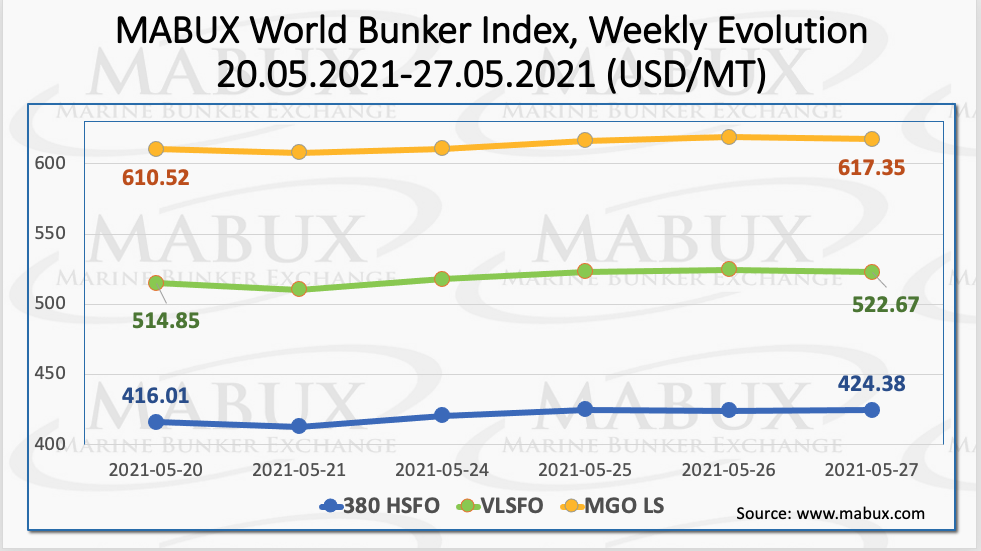
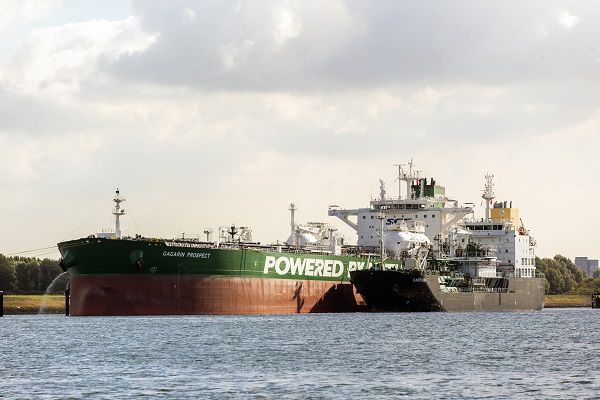
The main driver for bunker prices this week is the decision of OPEC+ alliance according further oil production cuts.
MABUX World Bunker Index has shown firm downtrend during the week. The 380 HSFO index has declined from 418.58 USD/MT to 411.01 USD/ MT (-7.57 USD), VLSFO has lost 11.82 USD: from 527.73 USD/MT to 515.91 USD/MT. MGO LS also fell by 9.87 USD 592.37 USD/MT down to 582.50 USD/MT.
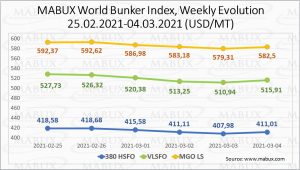
The Global Scrubber Spread (SS) – the difference in price between 380 HSFO and VLSFO – has not had any drastic changes during the week and averaged 105.27 USD (105.66 USD last week).
SS Spread in Rotterdam has narrowed during the week from 108.00 USD down to 101.00 USD (-7.00 USD), the average SS spread for the week has decreased by 6.00 USD from 110.50 to 104.50 USD. In Singapore, SS Spread has declined during the week by 6.00 USD: from 129.00 USD to 123.00 USD, however, the average weekly SS index has fallen by 2.00 USD: from 126.17 USD last week to 124.17 USD. No it is visible, that SS turned into downward correction in the short term.
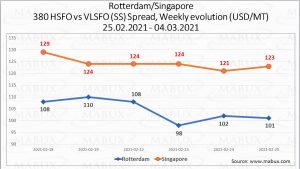
Correlation of MBP Index (Market Bunker Prices) vs DBP Index (MABUX Digital Benchmark) in the four global largest hubs during the past week showed that 380 HSFO and MGO LS fuels remain undervalued in all selected ports except of Houston where those kind of fuel are overcharged (+ 8 USD and +14 USD respectively).
According to DBP Index, 380 HSFO was undercharged on average from minus 15 USD in Fujairah to minus 24 USD in Singapore. The MGO LS was also underpriced ranging from minus 13 USD in Fujairah to minus 41 USD in Singapore. VLSFO according to DBP Index, is overvalued in Rotterdam (+1 USD), Fujairah (+2 USD) and Houston (+21 USD) while it is undercharged in Singapore (-6 USD).

OPEC and its allies will decide on Mar.04 whether to freeze oil output or raise it slightly from April as a recent price rally is clouded by concern over the fragility of economic recovery during the COVID-19 pandemic. It was expected the OPEC+ group of producers to ease supply cuts by about 500,000 barrels per day (bpd) from April.
OPEC’s de facto leader Saudi Arabia has also been expected to partially or fully end its voluntary production cut of an additional 1 million bpd. At the same time there are singes that some key members of the OPEC had suggested that output across the OPEC+ group should be kept unchanged for example, Russia has been insisting on raising output to avoid prices spiking any further and lending support to shale oil output from the United States, which is not part of OPEC+.
Bunker Indexes were also supported U.S. official data that showed a record drop in domestic fuel inventories from the aftermath of a deep freeze that shuttered refineries in several states. U.S. gasoline inventories tumbled last week by the most since 1990 after a polar blast wiped out more than 5 million barrels a day of refining capacity in late February along the U.S. Gulf Coast.
Crude stockpiles swelled with refineries still shut. Meanwhile, much of the crude production hit by the cold temperatures has been restored. Crude supplies grew by a record 21.56 million barrels, signaling weak demand from refiners at the time.Source: www.mabux.com
Source: MABUX
Follow on Twitter:
[tfws username=”MabuxAB” height=”700″ width=”350″ theme=”light” color=”#FAB81E” tweets=”2″ header=”yes” footer=”yes” borders=”yes” scrollbar=”yes” background=”yes”]












